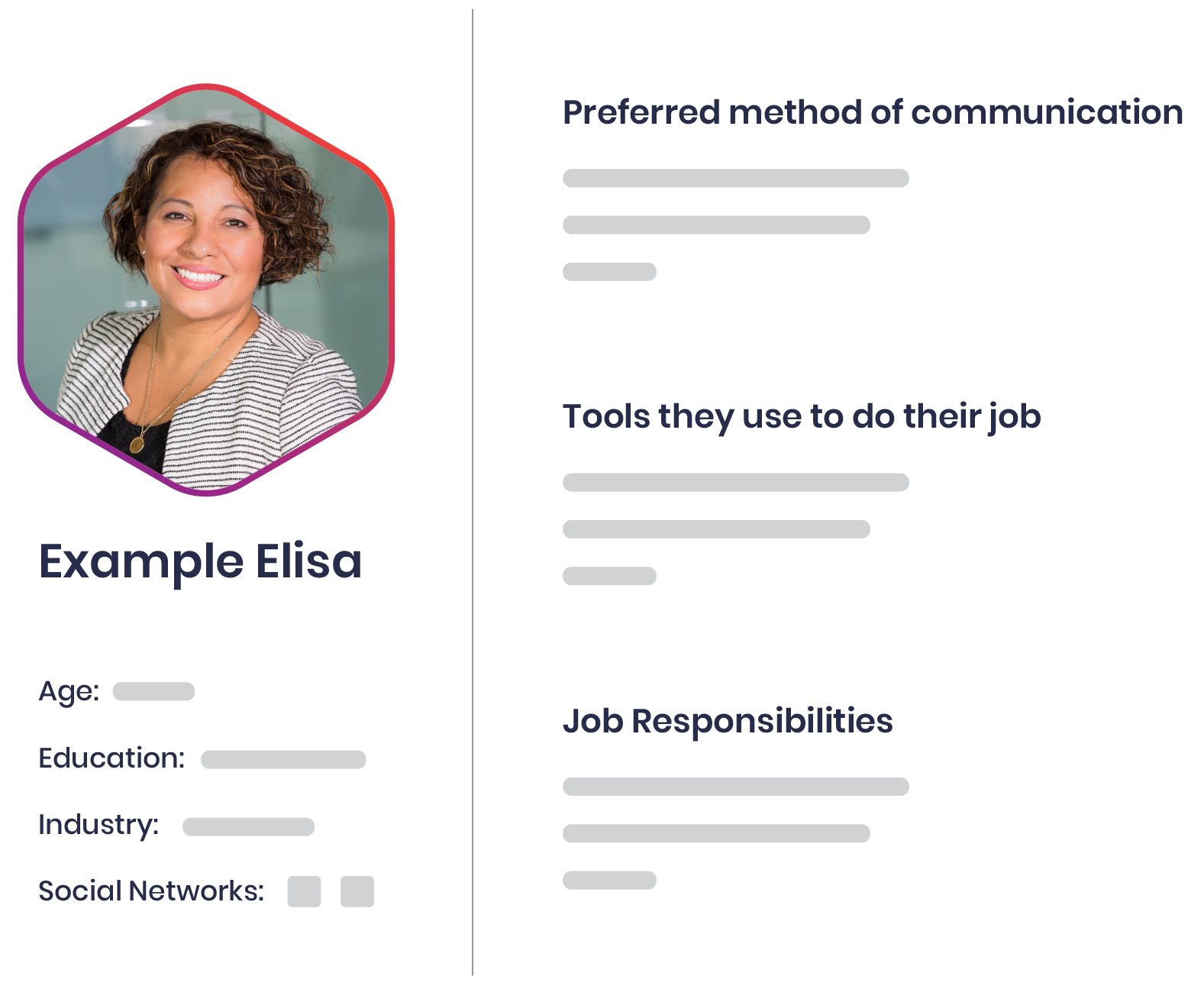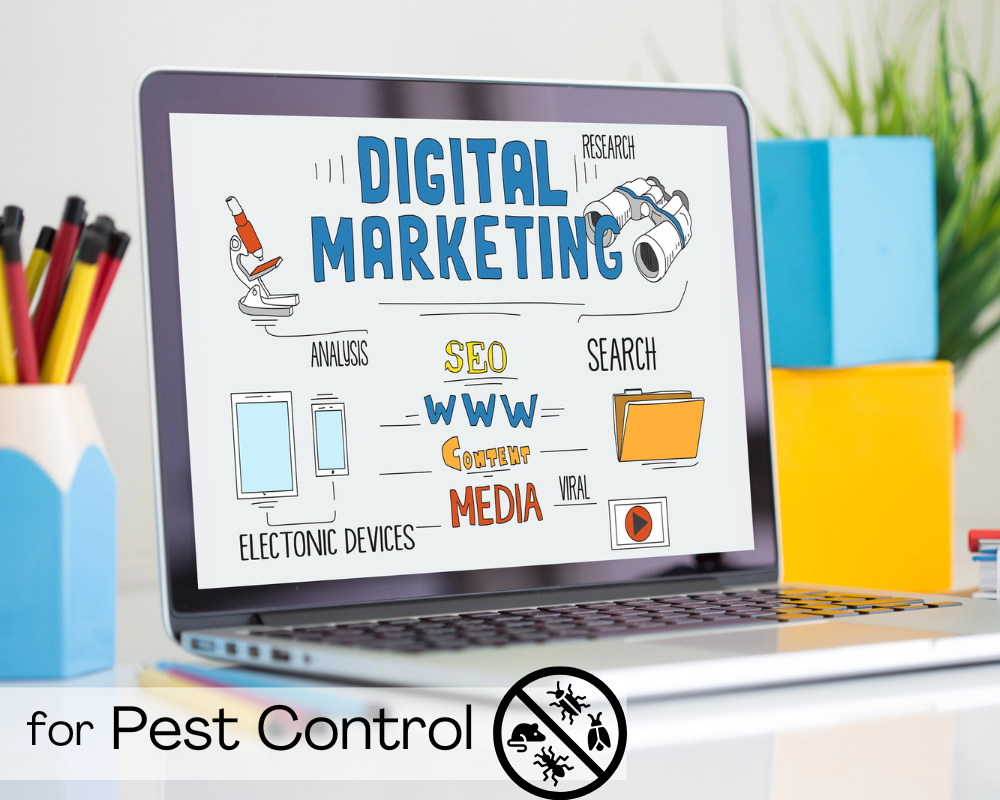Create Detailed Buyer Personas for your Inbound Marketing Strategy

How to Create a Buyer Persona
What is a Buyer Persona?
A semi-fictional representation of your ideal buyer based on data, interviews, and some educated guesses.
Let's go over how to construct a persona that can be used to tie marketing, sales, and customer support together.
- Determine who should build your persona.
- Define the information that should be included
- Identify the best sources for that information
- Historical Data
- Buyer Interviews
- Educated Guesses
- Aggregate information about a particular kind of person in your target market
- Find an avatar to represent that kind of person
- Give your persona a name
1. Determine who should build your persona.
We'll start by discussing who should build your persona, then move on to discussing how to create it, and finally, how your persona may be used by all of your inbound marketing teams.
First and foremost, who is in charge of developing your personas? This is a duty that frequently falls to the marketing department, and although it's OK for marketing to lead this endeavor, they shouldn't do so alone. As many distinct perspectives within your firm as feasible should be included in the design of your buyer personas. To figure out who is most receptive to your product and positioning, your marketing team should look at their performance indicators.
Your sales team should review previous sales data to determine which types of customers are most likely to buy from you, as well as give anecdotal information on which customers are the easiest to work with during the sales process. Your customer service team should share their knowledge of who makes the happiest and most loyal clients. Your back-office teams, in addition to these customer-facing teams, may have significant contributions to make. Finance could be able to tell you which kind of people are most likely to keep their financial obligations to your organization. Legal may be able to identify certain types of persons who frequently violate your terms of service. And so forth.
The point is that you'll need to assign someone to be in charge of establishing and maintaining your buyer personas, and someone in marketing could be a good fit. However, if your personas are purely dependent on marketing input, they will almost surely be lacking. The more perspectives you can incorporate during the persona development process, the better your final personas will be.
So, how do you go about putting together your personas? You must first define the material that should be included, then determine the best sources for that information, and then, roll up your sleeves and get to work.
When it comes to establishing the information that should be included in your personas, you should start with the objective of your firm. Your buyer persona will be built on the foundation of a clear grasp of the problem your firm is supposed to solve. You can begin brainstorming the broad types of people who have that problem after you know what problem people want you to fix. Begin by asking your customer service team to look for any commonalities among your most profitable customers. What characteristics are strongly linked to product success? Perhaps one type of person has a lot of success with your product; perhaps multiple types of individuals have a moderate degree of success; perhaps some types of people are virtually sure to be unsatisfied with your product. You may get a good sense of how many personas you'll need by defining these groups of people.
2. Define the information that should be included
Once you know that, you can figure out what information you should include in your personas by looking at the jobs of the people on your customer-facing teams. List the questions that marketing, sales, and customer service require addressed in order to serve each persona.
Marketing, for example, will need to know how a specific persona describes their problem when typing it into Google. Marketing will also want to know where each persona goes to receive help with their problem and through what channels they prefer to be contacted. Demographic data may also be highly useful to a marketing team, allowing them to ensure that the material they develop is written in the appropriate tone, translated into the suitable languages, and includes pictures of people who closely reflect the persona.
While all of this information is useful for marketing, none of it will boost sales in any way. For each persona, a salesperson can ask questions like,
- "How important is it to solve this problem?"
- What kinds of objectives is this issue stopping the persona from accomplishing?
- Is this persona usually the only one involved in the purchasing choice, or will they need to gain approval from others first?
- How long do they anticipate the sales process to take? Do they consider the price of your product to be high, low, or average?
Your services team may have a completely different set of questions in addition to these.
- What, for example, must occur in order for this persona to be satisfied with your product after acquiring it?
- What aspects of your product are the most perplexing to them?
- What features of your product do they like the most?
- What kinds of things will make them so delighted that they'll tell their friends about your product?
- What kinds of things will irritate them to the point where they will advise others not to buy your product?
As you can see, when you combine marketing, sales, and services, the number of questions you may ask about each persona can quickly grow. That's fine, though. Simply pull them all out and write them down, and you'll have a recipe for a wonderful buyer persona.
3. Identify the best sources for that information
After you've outlined all of your questions, you'll need to figure out the best method to respond to each one.
Historical Data
Looking at historical data, conducting client interviews, and generating educated assumptions are the three basic possibilities here. Answer as many questions as you can using the information you already have. Look at the marketing statistics for your most and least popular content pieces, for example, to see if there are any similarities in what is or is not resonating. You can also look at sales data to see if there are any patterns in who is most likely to buy and who is least likely to buy. You may also look at existing customer data to see if there are any patterns in terms of folks that remain loyal or buy several times versus those who buy once and then vanish.
Buyer Interviews
It's time to start interviewing clients once you've filled in as much of the character as you can based on your data. Even if you can fill in your full profile with data, it's still a good idea to talk to real customers to make sure your interpretation of the data reflects their real-life experiences. You should interview roughly 15 people for each of your personalities. Ask them how they found your company, what made them decide to buy from you, what positive and negative experiences they had along the road, and how you can improve the overall experience you've provided them, using the questions your teams came up with as a guide.
For each of your personas, you’ll want to interview about 15 people.
Take careful notes throughout these conversations, and if possible, record them, and then search for recurring themes from one consumer to the next. The information you gain from these interviews will give your characters a degree of depth that you won't be able to get any other way.
Educated Guesses
After you've finished evaluating data and conducting interviews, you should go over your personas with marketing, sales, and service colleagues. Are there any questions that marketing, sales, or services had at the start of the process that the data and interviews haven't answered? If that's the case, it's time to pool your customer-facing teams' aggregate wisdom and make some educated guesses. Try to reach a consensus as much as possible, although it's fine if there are disputes. Your personas' first draft will serve as a starting point. From there, you can try out different methods for verifying or refuting certain pieces of data, and improve them over time.
That takes us to the third aspect of buyer personas: their application. Everything your customer-facing teams do should be informed by your personas. They should be used by marketing to produce and position content. They should be used by salespeople to qualify and understand individual contacts. And services should utilize these to guide their efforts to create the best possible experience for their customers when using their product. Make sure that marketing, sales, and customer service all have opportunities to provide input so that your personas can improve over time.
With that stated, please keep in mind that personas do not take the place of the need to learn more about specific individuals. When it comes to building relationships with particular consumers, your sales and service staff should keep in mind that there will always be discrepancies between your personas and real people. The persona should serve as a jumping off point for the interaction, but when you learn more about a person, rely on the data you have about them rather than the information in your character.
It's crucial to remember that developing personalities is a never-ending process. Even if you have your personas in the best possible shape, people change over time. Your personas will need to be updated after a few years, when new communication methods have changed how people learn about your product, new competitors have entered your market, and your product has matured and your customer base has grown. If your teams are always providing input, your existing personas should evolve to reflect the changes in the people they represent. However, it's possible that your product has piqued the interest of a whole new group of people, and you'll need to construct a new persona to represent them. You can establish that identity and stay ahead of the curve by following the steps we've already detailed. And that's an important element of what it means to improve.
Why are buyer personas so critical to your inbound marketing strategy?
Making a concrete definition of who your ideal customer is one of the most important things your company needs to do is one of the most important things it can do. Not everyone will buy your goods, and you shouldn't expect them to. Some people aren't a good fit for your offering, and if you promote and sell to them and get them to buy, they'll find out firsthand how awful of a fit they are, and their negative reviews and unpleasant social media posts may frighten away people who are.
If you want your business to succeed, you must have a thorough understanding of your target customer. We advocate establishing a buyer persona to help you get there. Based on data, interviews, and informed assumptions, a buyer persona is a semi-fictional picture of your ideal buyer. In essence, it's a description of your ideal buyer written in such a way that it sounds like it's referring to a specific individual. So you gather data on a specific type of person in your target market, create an avatar to represent that person, and give them a name. The names of buyer personas are frequently catchy and alliterative, such as Management Margaret or Skeptical Suzy. This makes it easier for your team to remember them and keep them in the front of their minds.
Personas have been around for a while, and different individuals have different views about how to create and use them. Personas are frequently created by marketing teams to drive their marketing efforts. They could be a compilation of demographic data and personal preferences aimed at assisting the marketing team in creating content that will emotionally resonate with a specific group of people. That's all well and good, but personalities have the potential to be much more than a marketing tool. Your personas should be valuable to your sales and service teams just as much as they are to your marketers.
Consider this: If your marketing team has a persona they're marketing to, your sales team has an ideal company profile that they use to qualify leads, and your services team has a different set of criteria for measuring customer satisfaction, your teams will be disjointed, and your customers will notice. There will be a lot of irritation internally and externally as a result of marketing talking to your consumers one way and sales restarting the discussion when they take over, and services having an entirely other set of assumptions about what your customers need and desire. As a result, ineffective teams and dissatisfied customers will emerge.
Customers will have a seamless end-to-end experience, and your internal teams will benefit from being well aligned with one other, if you can establish a single, unified persona that is robust enough to lead your marketing efforts, sales dialogues, and services operations.
Consider the following transcript of Brian Halligan, HubSpot's CEO, talking about the personas utilized when HubSpot was in its early phases to give you an idea of what that could look like in real life:
Brian Halligan: When we were first starting HubSpot, we had different personas that were interested in HubSpot. One we called Owner Ollie, and Owner Ollie, it was a five-person company. Ollie didn't have any time to do any marketing, and he was just trying to deliver his product, let's say, and it was often times a services business. Then we had another persona called Mary Marketer, and Mary Marketer was a marketer in a, it's called 50, hundred-person, marketing organization, small marketing team, but she marketed all day long.
Both of these personas wanted very different things. Owner Ollie really just wanted HubSpot to do the darn marketing for him. Owner Ollie, if you wanted anything, wanted the world's simplest product. He didn't care about any analytics in the product. He wanted just, he wanted to do it for him, he wanted us to do it for him. Mary wanted very different things. She was kind of power-user.
She was growing more technical and sophisticated over time. She wanted analytics, she wanted great email marketing, great social marketing, great everything, and she wanted it all tied together with great support.
Before Brian gets to the punchline, I'd like to make a quick remark. Despite the fact that Owner Ollie and Mary Marketer are personas, Brian talks to them as though they were real persons. He is aware of their desires and requirements. He speaks of Ollie as if he were a friend who understands his concerns and the finest solutions for him.
Buyer personas are all about this. Putting yourself in the shoes of your target customers.
Now, let's get back to Brian.
Brian Halligan: We were trying to serve both, and at some point in time, boy, we were trying to build products for both of them. The requirements for both were very difficult to solve at the same time. The more we tried to solve for both, the less we served either. At some point we said, "We're going to solve for Mary, the future is Mary. It's a company between five and let's call it 500 employees, with a small marketing staff, growing business, sales staff, they want to be a big company someday, let's equip them with the tools and the knowledge they need to really grow a modern go-to-market model.
That fed into, by making that decision, our product organization could really focus there, our sales organization could focus there, our marketing messaging could really focus there.
HubSpot's decision to focus on a single persona was a watershed moment in the company's development.
It'll work for you, too, if you put in the time to fully nail down your persona. So make a commitment right now to identify your personalities and organize your team around them.
The Importance of Buyer Personas in Inbound Marketing
When people think of inbound marketing, they usually think of content creation and social media buzz. While blogging and social media involvement are vital components of a successful inbound marketing plan, they are not the only ones.
Companies that fail to build a balanced campaign are one of the key reasons why they struggle with inbound marketing. The creation of buyer personas is a vital component of any marketing plan, but it is frequently overlooked by inbound marketers who fail to recognize that a successful marketing strategy accomplishes more than just increasing website traffic. If you haven't already done so, now is the time. Here’s why you should start doing it.
Connection is the goal of inbound marketing.
You're probably going to attract the wrong crowd if your marketing plan is primarily focused on an SEO approach that increases traffic. Instead of attracting visitors who are interested in what you have to offer and prepared to pay for your services, you're more likely to attract visitors who happened onto your site by chance. Creating buyer personas – a consumer profile that combines marketing and psychology to better target certain demographics – is one method to avoid this.
Buyer personas are useful because they allow you to develop content that appeals to a specific demographic. Buyer personas, on the other hand, are considerably more than just a target demographic. They enable us to examine specific demographics in order to better understand their wants and expectations, allowing us to tailor our material to address their problems and meet their needs.
People want you to pay attention to them.
Customers, in particular, despise feeling as if they are being ignored. Buyer personas enable businesses to communicate with customers in a way that recognizes and addresses their requirements. These personas assist businesses learn how to acquire a deeper understanding of who their consumers and future customers are in the context of inbound marketing.
In the last six months, about 65 percent of organizations that changed their buyer profile outperformed their competition in terms of revenue and sales targets. The reason for this is that buyer personas allow businesses to target certain personas with their advertisements. Instead of employing a one-size-fits-all marketing strategy, businesses can develop a variety of unique projects that are suited for various personas, and then prioritize which target groups they want to reach the most.
Predict. Engage. Repeat.
Buyer personas are useful for identifying who a company's ideal client is, but they're also useful for assisting firms in engaging with their existing consumer base. Buyer personas assist firms in engaging with customers, which is the core goal of inbound marketing.







